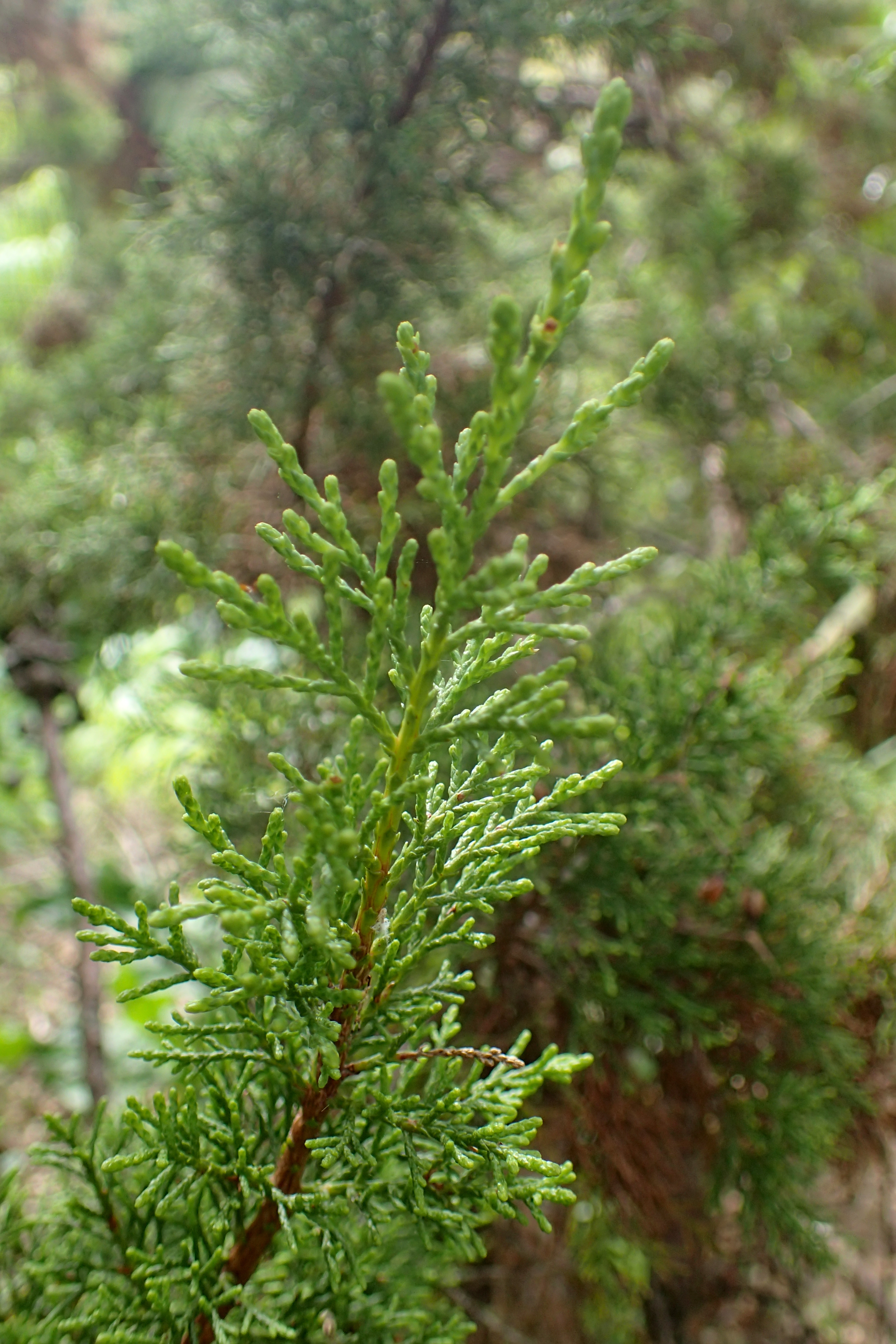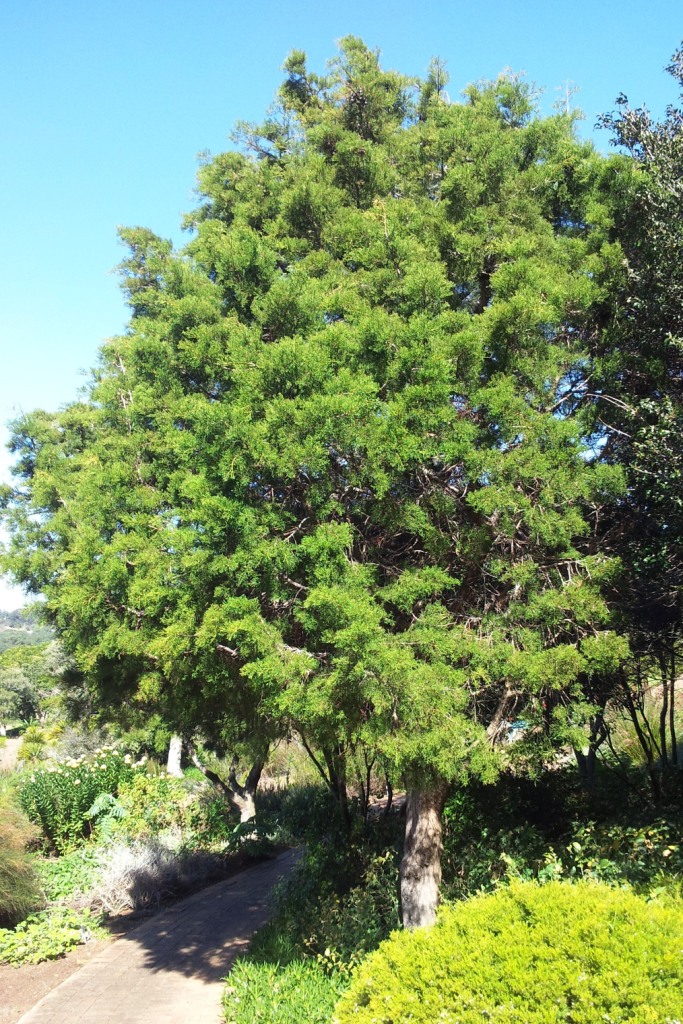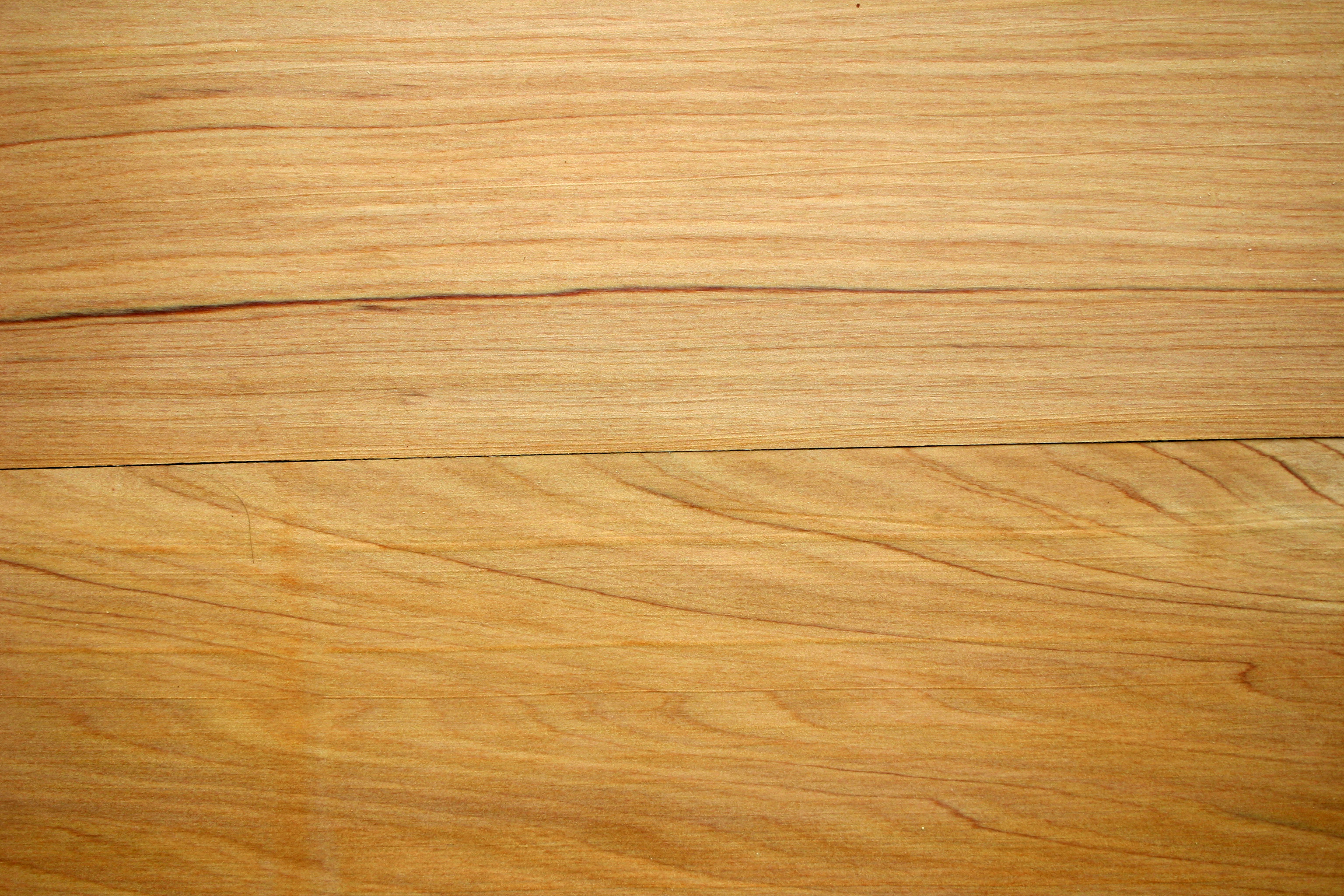|
Widdringtonia
''Widdringtonia'' is a genus of coniferous trees in the Cupressaceae (cypress family). The name was Austrian botanist Stephan Endlicher's way of honouring an early expert on the coniferous forests of Spain, Capt. Samuel Edward Widdrington (1787–1856). There are four species, all native to southern Africa, where they are known as cedars or African cypresses. Description This genus contains large evergreen shrubs and trees, reaching 5–20 m tall (to 40 m in ''W. whytei''). Juveniles have needle-like leaves that are arranged in spirals. The scale-like leaves in adults are arranged in decussate opposite pairs in four rows along the twigs. The plants are dioecious. The small male cones grow at the ends of twigs. The scales have no stalks. They grow into an upward, decreasing beak with two to six pollen sacs at the base of the cone. The female cones are small and stalkless and grow in short spikes on the branches. The scales grow in two opposite rows that spread at the base duri ... [...More Info...] [...Related Items...] OR: [Wikipedia] [Google] [Baidu] |
Widdringtonia Nodiflora
''Widdringtonia nodiflora'' (mountain cypress) is a species of ''Widdringtonia'' native to Southern Africa. It usually grows at high altitudes, typically among rocks on mountainsides. Its foliage and wood are highly flammable while its natural habitat is prone to fire. To compensate, the species will coppice from its roots after being burnt down. Description It is an evergreen multistemmed shrub or small to rarely medium-sized tree growing to 5–7 m (rarely to 25 m) tall. The leaves are scale-like, 1.5–2 mm long and 1-1.5 mm broad on small shoots, up to 10 mm long on strong-growing shoots, and arranged in opposite decussate pairs. The cones are globose, 1–2 cm long, with four scales. Each tree produces both male and female cones. It is unique in the genus in its ability to coppice, readily re-sprouting from burnt or cut stumps; this enables it to survive wildfires, and is considered a major factor in allowing its abundance relative to the other species ... [...More Info...] [...Related Items...] OR: [Wikipedia] [Google] [Baidu] |
Widdringtonia Schwarzii Kz1
''Widdringtonia'' is a genus of coniferous trees in the Cupressaceae (cypress family). The name was Austrian botanist Stephan Endlicher's way of honouring an early expert on the coniferous forests of Spain, Capt. Samuel Edward Widdrington (1787–1856). There are four species, all native to southern Africa, where they are known as cedars or African cypresses. Description This genus contains large evergreen shrubs and trees, reaching 5–20 m tall (to 40 m in ''W. whytei''). Juveniles have needle-like leaves that are arranged in spirals. The scale-like leaves in adults are arranged in decussate opposite pairs in four rows along the twigs. The plants are dioecious. The small male cones grow at the ends of twigs. The scales have no stalks. They grow into an upward, decreasing beak with two to six pollen sacs at the base of the cone. The female cones are small and stalkless and grow in short spikes on the branches. The scales grow in two opposite rows that spread at the base durin ... [...More Info...] [...Related Items...] OR: [Wikipedia] [Google] [Baidu] |
Widdringtonia Nodiflora Kz1
''Widdringtonia'' is a genus of coniferous trees in the Cupressaceae (cypress family). The name was Austrian botanist Stephan Endlicher's way of honouring an early expert on the coniferous forests of Spain, Capt. Samuel Edward Widdrington (1787–1856). There are four species, all native to southern Africa, where they are known as cedars or African cypresses. Description This genus contains large evergreen shrubs and trees, reaching 5–20 m tall (to 40 m in ''W. whytei''). Juveniles have needle-like leaves that are arranged in spirals. The scale-like leaves in adults are arranged in decussate opposite pairs in four rows along the twigs. The plants are dioecious. The small male cones grow at the ends of twigs. The scales have no stalks. They grow into an upward, decreasing beak with two to six pollen sacs at the base of the cone. The female cones are small and stalkless and grow in short spikes on the branches. The scales grow in two opposite rows that spread at the base durin ... [...More Info...] [...Related Items...] OR: [Wikipedia] [Google] [Baidu] |
Widdringtonia
''Widdringtonia'' is a genus of coniferous trees in the Cupressaceae (cypress family). The name was Austrian botanist Stephan Endlicher's way of honouring an early expert on the coniferous forests of Spain, Capt. Samuel Edward Widdrington (1787–1856). There are four species, all native to southern Africa, where they are known as cedars or African cypresses. Description This genus contains large evergreen shrubs and trees, reaching 5–20 m tall (to 40 m in ''W. whytei''). Juveniles have needle-like leaves that are arranged in spirals. The scale-like leaves in adults are arranged in decussate opposite pairs in four rows along the twigs. The plants are dioecious. The small male cones grow at the ends of twigs. The scales have no stalks. They grow into an upward, decreasing beak with two to six pollen sacs at the base of the cone. The female cones are small and stalkless and grow in short spikes on the branches. The scales grow in two opposite rows that spread at the base duri ... [...More Info...] [...Related Items...] OR: [Wikipedia] [Google] [Baidu] |
Widdringtonia Whytei Mulanje Malawi
''Widdringtonia'' is a genus of coniferous trees in the Cupressaceae (cypress family). The name was Austrian botanist Stephan Endlicher's way of honouring an early expert on the coniferous forests of Spain, Capt. Samuel Edward Widdrington (1787–1856). There are four species, all native to southern Africa, where they are known as cedars or African cypresses. Description This genus contains large evergreen shrubs and trees, reaching 5–20 m tall (to 40 m in ''W. whytei''). Juveniles have needle-like leaves that are arranged in spirals. The scale-like leaves in adults are arranged in decussate opposite pairs in four rows along the twigs. The plants are dioecious. The small male cones grow at the ends of twigs. The scales have no stalks. They grow into an upward, decreasing beak with two to six pollen sacs at the base of the cone. The female cones are small and stalkless and grow in short spikes on the branches. The scales grow in two opposite rows that spread at the base durin ... [...More Info...] [...Related Items...] OR: [Wikipedia] [Google] [Baidu] |
Widdringtonia Whytei
''Widdringtonia whytei'', the Mulanje cedar or Mulanje cypress, is a species of conifer native to Malawi, where it is endemic to the Mulanje Massif at altitudes of 1,830–2,550 m. It has become endangered as a result of over-harvesting for its wood, and an increase in the frequency of wildfires due to human activity.Farjon, A. (2005). ''Monograph of Cupressaceae and Sciadopitys''. Royal Botanic Gardens, Kew. Pauw, C. A. & Linder, H. P. 1997. Widdringtonia systematics, ecology and conservation status. ''Bot. J. Linn. Soc.'' 123: 297-319. Description It is a large evergreen tree growing to 40–50 m tall. The leaves are scale-like, 1.5–3.5 mm long and 1–1.5 mm broad on small shoots, up to 10 mm long on strong-growing shoots, and arranged in opposite decussate pairs. The cones are globose, 1.5–2.2 cm long, with four scales. Distribution The species '' Widdringtonia nodiflora'' is common in South Africa and Zimbabwe in its dwarf form which has little mor ... [...More Info...] [...Related Items...] OR: [Wikipedia] [Google] [Baidu] |
Widdringtonia Wallichii
''Widdringtonia wallichii'', Clanwilliam cedar or Clanwilliam cypress, previously ''Widdringtonia cedarbergensis'' is a species of ''Widdringtonia'' native to South Africa, where it is endemism, endemic to the Cederberg, Cederberg Mountains northeast of Cape Town in Western Cape Province. It is threatened by habitat lossFarjon, A. (2005). ''Monograph of Cupressaceae and ''Sciadopitys. Royal Botanic Gardens, Kew. Pauw, C. A. & Linder, H. P. 1997. ''Widdringtonia'' systematics, ecology and conservation status. ''Bot. J. Linn. Soc.'' 123: 297-319. and protected in South Africa under the National Forest Act (Act 84) of 1998. It is a small evergreen tree growing to 5–7 m (rarely to 20 m) tall. The leaf, leaves are scale-like, 1.5 mm long and 1 mm broad on small shoots, up to 15 mm long on strong-growing shoots, and arranged in opposite decussate pairs. The conifer cone, cones are globose to rectangular, 2–3 cm long, with four scales. Chemical constituents The ... [...More Info...] [...Related Items...] OR: [Wikipedia] [Google] [Baidu] |
Widdringtonia Wallichii (Widdringtonia Cedarbergensis) - Mendocino Coast Botanical Gardens - DSC02048
''Widdringtonia wallichii'', Clanwilliam cedar or Clanwilliam cypress, previously ''Widdringtonia cedarbergensis'' is a species of ''Widdringtonia'' native to South Africa, where it is endemic to the Cederberg Mountains northeast of Cape Town in Western Cape Province. It is threatened by habitat lossFarjon, A. (2005). ''Monograph of Cupressaceae and ''Sciadopitys. Royal Botanic Gardens, Kew. Pauw, C. A. & Linder, H. P. 1997. ''Widdringtonia'' systematics, ecology and conservation status. ''Bot. J. Linn. Soc.'' 123: 297-319. and protected in South Africa under the National Forest Act (Act 84) of 1998. It is a small evergreen tree growing to 5–7 m (rarely to 20 m) tall. The leaves are scale-like, 1.5 mm long and 1 mm broad on small shoots, up to 15 mm long on strong-growing shoots, and arranged in opposite decussate pairs. The cones are globose to rectangular, 2–3 cm long, with four scales. Chemical constituents The essential oil derived from leaves contain ... [...More Info...] [...Related Items...] OR: [Wikipedia] [Google] [Baidu] |
Widdringtonia Schwarzii
''Widdringtonia schwarzii'' (Willowmore cedar or Willowmore cypress, af, Baviaanskloof-seder)University of the Witwatersrand/ref> is a species of ''Widdringtonia'' native to South Africa, where it is endemic to the Baviaanskloof and Kouga Mountains west of Port Elizabeth in Eastern Cape Province; it occurs on dry rocky slopes and crags at 600-1,200 m altitude. It is threatened by habitat loss, particularly by wildfire.Farjon, A. (2005). ''Monograph of Cupressaceae and Sciadopitys''. Royal Botanic Gardens, Kew. The Willowmore cypress is a protected tree in South Africa. It is a medium-sized evergreen tree growing to 20–25 m (formerly known to 40 m) tall. The leaves are scale-like, 1.5 mm long and 1 mm broad on small shoots, up to 10 mm long on strong-growing shoots, and arranged in opposite decussate pairs. The cones are globose to rectangular, 2–3 cm long, with four scales. It is closely related to ''Widdringtonia wallichii ''Widdringtonia wallichii ... [...More Info...] [...Related Items...] OR: [Wikipedia] [Google] [Baidu] |
Mulanje Massif
The Mulanje Massif, also known as Mount Mulanje, is a large inselberg in southern Malawi. Sapitwa Peak, the highest point on the massif at 3,002 m, is the highest point in Malawi. It lies 65 km east of Blantyre, rising sharply from the surrounding plains of Phalombe and the Mulanje district. Geography Much of the Massif consists of rolling grassland at elevations of 1800–2200 m, intersected by deep forested ravines. It has many individual peaks reaching heights of over 2500 m, including Chambe Peak, the West Face of which is the longest rock climb in Africa. The Massif was formed by the intrusion of magma into the Earth's crust about 130 million years ago. The surrounding rock eroded away over time, leaving behind the erosion-resistant igneous rock of the Mulanje Massif. The first European to report seeing the Massif was David Livingstone in 1859, but archeological investigation reveals evidence of human visits to the Massif from the Stone Age onwards. The e ... [...More Info...] [...Related Items...] OR: [Wikipedia] [Google] [Baidu] |
Cupressaceae
Cupressaceae is a conifer family, the cypress family, with worldwide distribution. The family includes 27–30 genera (17 monotypic), which include the junipers and redwoods, with about 130–140 species in total. They are monoecious, subdioecious or (rarely) dioecious trees and shrubs up to tall. The bark of mature trees is commonly orange- to red- brown and of stringy texture, often flaking or peeling in vertical strips, but smooth, scaly or hard and square-cracked in some species. Description The leaves are arranged either spirally, in decussate pairs (opposite pairs, each pair at 90° to the previous pair) or in decussate whorls of three or four, depending on the genus. On young plants, the leaves are needle-like, becoming small and scale-like on mature plants of many genera; some genera and species retain needle-like leaves throughout their lives. Old leaves are mostly not shed individually, but in small sprays of foliage (cladoptosis); exceptions are leaves on the s ... [...More Info...] [...Related Items...] OR: [Wikipedia] [Google] [Baidu] |
Cederberg
The Cederberg mountains are located near Clanwilliam, approximately 300 km north of Cape Town, South Africa at about . The mountain range is named after the endangered Clanwilliam cedar (''Widdringtonia wallichii''), which is a tree endemic to the area. The mountains are noted for dramatic rock formations and San rock art. The Cederberg Wilderness Area is administered by CapeNature. ''Cederberg'' is now the generally accepted spelling for the area, which combines the English (Cedarberg) and Afrikaans (Sederberg) variants. Geography and climate The Cederberg mountains extend about 50 km north–south by 20 km east–west. They are bordered on the west by the Sandveld, the north by the Pakhuis Mountains, the east by the Springbok Flats and the south by the Kouebokkeveld Mountains and the Skurweberge. The main access road, the N7, runs to the west of the range. The nearest towns are Citrusdal to the southwest and Clanwilliam to the north. The area is spars ... [...More Info...] [...Related Items...] OR: [Wikipedia] [Google] [Baidu] |






